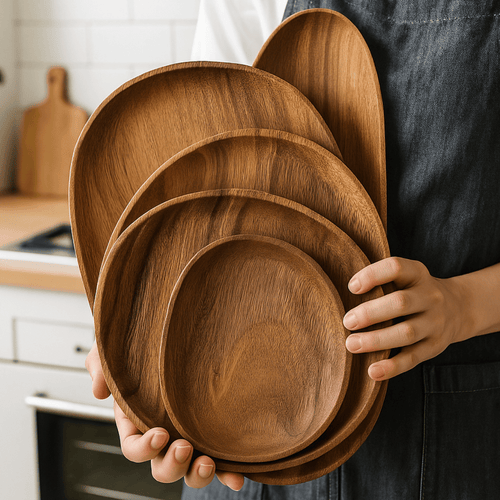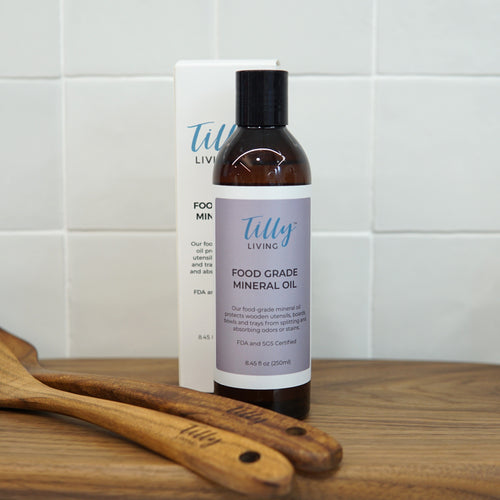We dream of a greener world. We’re mindful shoppers, careful consumers, and champions of reusable bags and compost bins. But in the heart of our homes—our kitchens—we sometimes overlook one everyday tool that has a surprisingly big impact: the cutting board. It’s the quiet foundation of every meal—and it’s time we rethink what it’s made of.
The Hidden Cost of Plastic
Plastic cutting boards have been a kitchen staple for decades. Cheap. Lightweight. Dishwasher-safe. But that convenience comes at a price. Every slice, chop, or dice subtly tears away tiny fragments. These microplastics find their way into our food, our bodies, and our environment. And while one board might not seem like much, the collective impact is massive.

Composite Boards: The Best of Both Worlds
This is where composite boards shine. Our Grainbond Trio Chopping Board is created from 80% wood fibers and 20% food-grade resin, making it strong, durable, and completely free of microplastic shedding. It’s the perfect union of sustainability and performance.
With a composite board, you're not sacrificing quality. It’s gentle on your knives, resistant to warping, dishwasher-safe, and long-lasting. It’s the kind of kitchen workhorse your sustainable home deserves.

Designed for Real-Life Kitchens
We don’t just want your kitchen to look green—we want it to feel green. That’s why our Grainbond board includes an anti-slip backing to keep you safe and a juice groove to keep things tidy. We also ensure every grain, every fiber, and every resin element reflects our commitment to purpose—and yours.
Sure, you’ll see light surface scratches with time. But those marks aren’t flaws—they’re proof the board is working hard, protecting your knives, and quietly becoming part of your daily rituals. And guess what? They fade into a beautiful, functional patina with washing and use.

Simple Steps to Make Your Kitchen Greener
-
Ditch plastic boards—even the best-quality ones—because they still shed microplastics.
-
Switch to composite or 100% natural boards—like Grainbond or Full Walnut.
-
Condition wood boards with Food Grade Mineral Oil to extend their life.
-
Keep repairing and reusing, instead of replacing tools every few months.
-
Rinse dishes in cold water when cooking to save energy and water.
Frequently Asked Questions
1. What makes a composite better than plastic?
Composite boards—like Grainbond—don’t shed microplastics. They combine wood fibers and food-safe resin, offering durability and performance without the hidden toxins of plastic.
2. Can composite boards replace wood boards?
Absolutely. Composite boards are dishwasher-safe, knife-friendly, stable, and eco-conscious.
3. Are scratches on composite boards bad?
No, they're a sign the board is doing its job. They fade over time and don't affect its integrity.
4. How do I care for wooden boards?
Use Food Grade Mineral Oil regularly to condition and protect wooden surfaces.
5. What if I prefer full-natural materials?
We're proud to offer Walnut Wood Chopping Boards and Walnut Wood Chopping Boards with Handle — timeless, sustainable, and handcrafted for your kitchen.
Your Kitchen, Aligned With Your Values
Your kitchen is more than just a cooking space—it's a place where your choices matter. When you choose Grainbond Trio Chopping Board, you’re choosing a board designed to honor your values: sustainability, health, and longevity.
Want a touch of natural warmth? Add a Walnut Wood Chopping Board or one with a convenient handle, and maintain them both with nourishing Food Grade Mineral Oil.

Let your kitchen reflect your heart—and leave the world a little greener every time you prep a meal.








